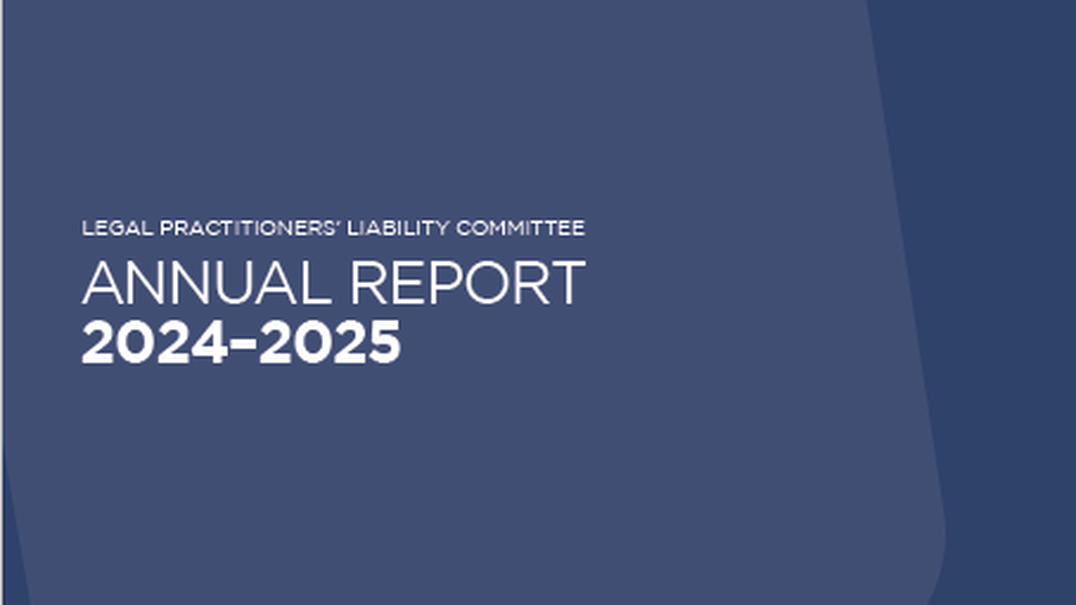Setting effective boundaries with clients can help legal practitioners to manage risk.
Practitioners know they must set a clear scope of work (what they will and will not do), the expected cost of such work and how the costs will be calculated. However, setting clear expectations with the client about when the work will be completed, as well as their solicitor’s availability and response times, is often overlooked.
In an environment where 24/7 information is the norm, clarity about email and phone contact outside business hours is important. A failure to set parameters exposes practitioners to unreasonable work obligations and increases the risk of a complaint, claim or something going wrong.
Under the Australian Solicitors’ Conduct Rules (ASCRs), solicitors must “deliver legal services competently, diligently and as promptly as reasonably possible” (r4.1.3). The ASCRs also specifically require solicitors to “provide clear and timely advice to assist clients to understand relevant legal issues” (r7.1).
Misaligned expectations as to what constitutes “diligently and as promptly” and “timely advice” can lead to client expectations that solicitors cannot meet, resulting in a breakdown of trust, allegations of poor service and constant pressure to respond quickly – all of which can increase the risk of a client complaint or an error.
The Victorian Legal Services Board and Commissioner emphasises that “clear communication at the outset is essential to helping the client understand a lawyer’s capacity to respond to client demands”. Practitioners should follow this guidance and be clear with the client about reasonable response times and what they can expect.
Risks of not setting boundaries
When expectations around availability, communication and work hours are not explicitly defined, there are a range of risks that can threaten both the quality of legal services delivered and lawyer wellbeing.
- Pressure to be fast leads to mistakes. Without defined boundaries, solicitors may find themselves inundated with urgent communications and unrealistic time pressures. In these situations, it can be tempting to provide a quick response. This can lead to correspondence or tasks not being given adequate time and attention, increasing the chances of mistakes or oversights that can compromise client interests.
- Informal setting and diverted attention. Legal work is complex and requires a practitioner’s full attention. If a practitioner is not in their normal work environment and responds to a client while doing other things, such as meal preparation or driving, the risk of errors increases. Solicitors should avoid or postpone any response until they are in a setting where they can give the client’s matter their full attention and follow good work protocols, such as making a file note and confirming advice in writing.
- Erosion of the divide between personal and work time. Constant availability, without time away from work to recharge physically and mentally, reduces a practitioner’s ability to work efficiently in a demanding professional environment. This can diminish mental clarity, increase burnout risk and impair decision making, raising the risk of errors that could affect the client.
Establishing and enforcing boundaries is crucial not only for risk mitigation but also for maintaining personal resilience in legal practice. While occasionally a solicitor may be required to work outside of business hours, this is generally neither a healthy habit nor a good long-term strategy.
Response times and client expectations
Balancing the competing needs of client service, reducing the risk of errors and maintaining sustainable practice management require firms and practitioners to set clear response times and work boundaries.
- Not everything is urgent. Most clients believe their issue is urgent, but not every inquiry is. While the professional conduct rules require prompt responses, they do not mandate immediate responses to all client communications. Tell clients that you will respond within business hours and in the normal course of work, unless you decide otherwise.
- Set defined work hours. State and document specific times for receiving and responding to communications and when staff are expected to be available. Consider a policy statement like:
“Our office hours are 9am to 6pm, and we receive and respond to client communications within these hours. We do not expect staff to take calls or respond to communications outside normal work hours.” - Clearly specify preferred communication channels. Firms should set the ways a client can communicate with them, whether by phone, email (business email addresses only), web portal or written correspondence. Firms may choose to include or exclude other channels, such as WhatsApp or WeChat.
- Inform clients from the start of the engagement. For both the solicitor and the client, engagement letters set clear expectations from the start of the retainer. Practices should start each engagement as they mean to progress them. After-hours or weekend communications with a new or potential client, just to win their business, may set up unrealistic ongoing expectations.
Managing client expectations
Written policies on boundaries can be made ineffective if actions do not meet the standards that have been set. Consider the following suggestions when designing and promoting communication boundaries.
- Establish achievable response protocols. Create a set of response protocols and times that suit operational requirements and that the firm can maintain. While practitioners may adjust these standards to reflect any change in circumstances, consistency is key.
- Don’t let exceptions become the rule. There will be times when a practitioner has a meeting after hours or take a call on the weekend. When a situation requires a departure from normal protocols, the practitioner should remind the client, and themselves, that it is an exception. This prevents the escalation of client expectations.
- Train staff on response times. Staff should understand their role in maintaining professional communication standards. A systematic approach reduces the risk of individual staff members creating conflicting expectations or failing to uphold the established protocols.
- Use positive language in setting boundaries. A friendly disposition can enhance client relationships while maintaining professionalism. For instance, “I do not respond to emails after 6pm” could be reframed as “I am available for client communications between 9am and 5pm Monday to Friday”. This approach emphasises availability and service commitment while establishing clear boundaries.
Healthy practice
The management of one’s own wellbeing goes together with the management of one’s legal practice. By establishing and maintaining clear professional boundaries, practitioners fulfil their professional obligations. Taking the simple step of setting boundaries, while small, is critical for both a healthy legal practice and lasting, productive client relationships.



